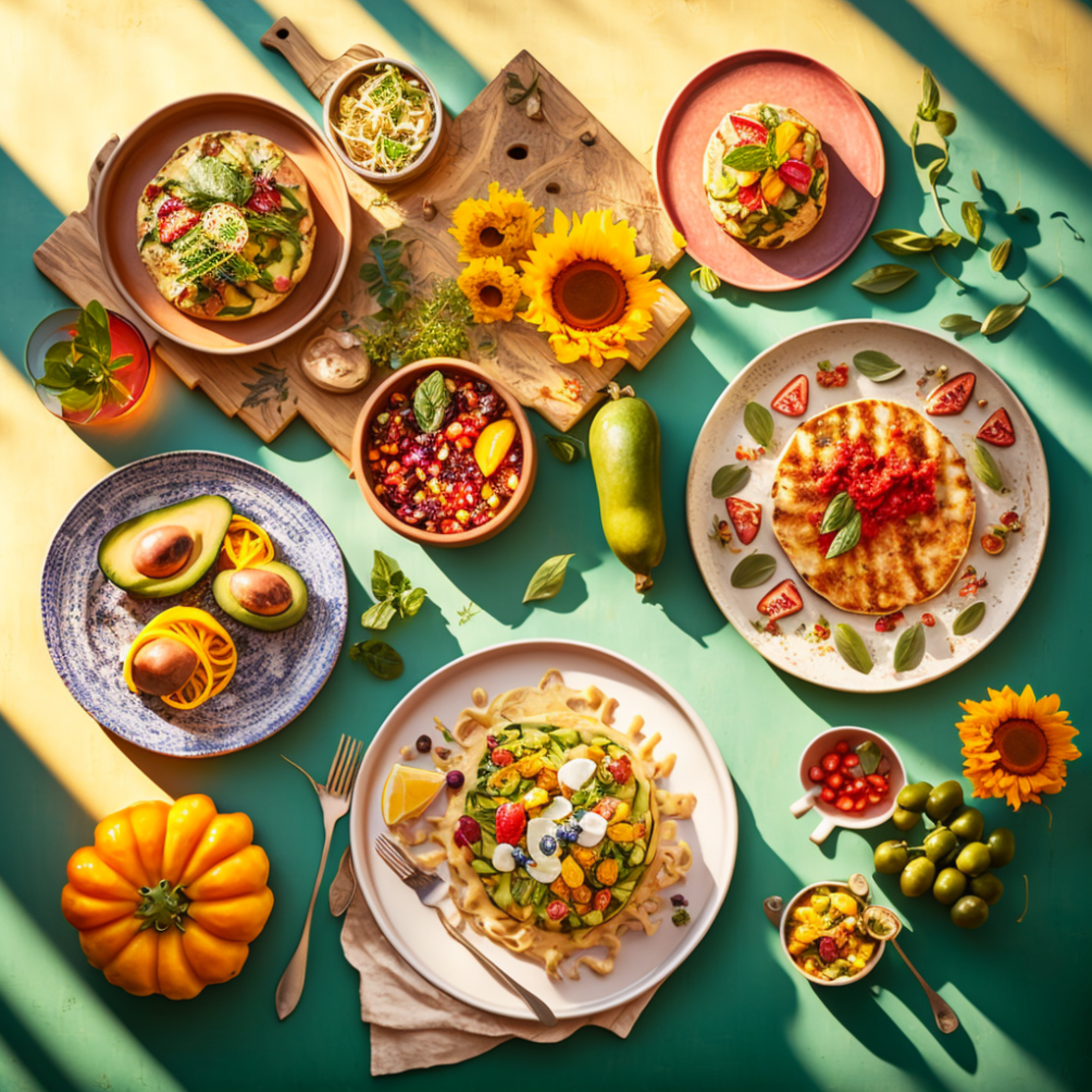
Get your grub on.
Getting your fix of different plants from week to week can be a daunting process. It's time to spice things up with some greenery! No, we're not talking about your landscaping, but rather, incorporating a variety of plants into your diet. Not only will your taste buds be singing with joy, but your body will be grateful for the added nutrients and health benefits. So, let's ditch the dullness and embrace the greens, and with this list of ten ways to incorporate up to 30 plants into your diet per week, you'll never run out of ideas. Get ready to eat your way to a healthier, happier, and more flavorful you!

How plants can change you from the inside out.
Studies have shown that eating a wide variety of plants can play a big role in enhancing the diversity of your gut microbiome. Your gut microbiome is essentially a tiny kingdom within our gut that's home to billions of bacteria, fungi, and other microbes. These little critters play a crucial role in our overall health, including digestion, immunity, and even our mood.
The shift towards plant-based diets has been growing like a weed (pun intended) and for good reason. Research shows that a diet rich in fruits, vegetables, whole grains, and legumes can not only improve our physical health, but also promote a thriving gut microbiome.
How so, you ask? Well, plants are packed with fiber, which serves as a feast for our gut bacteria. This leads to a more diverse gut microbiome, which is a good thing because diversity equals stability. A stable gut microbiome can help with everything from preventing inflammation to improving mood.
10 ways to incorporate 30+ plants into your diet per week.
Salad greens
Salad greens are a staple in many healthy diets and for good reason. They are a great source of vitamins and minerals, including vitamins A and C, calcium, and iron. Adding a variety of greens to your salads can not only add flavor but also provide a boost of nutrients to your meals. For example, try adding spinach to your salad for added iron or arugula for a boost of vitamins A and C.
Smoothies
Smoothies are an easy and convenient way to get a variety of plants into your diet. By blending together fruit, leafy greens, and avocado, you can create a delicious and nutritious drink that is packed with vitamins, minerals, and healthy fats. For example, try a smoothie made with spinach, banana, and almond milk for a tasty and healthy snack.
Snack on veggies
Raw veggies make for a great snack option that is both satisfying and nutritious. Keeping a variety of veggies on hand, such as carrots, celery, cucumbers, and cherry tomatoes, makes it easy to grab a quick snack when you need it. Veggies are also a great source of fiber, vitamins, and minerals, making them a healthy option for snacking.

Nuts and seeds
Nuts and seeds are a great source of healthy fats, fiber, and vitamins. Adding a handful of almonds, walnuts, or sunflower seeds to your meals can provide a crunchy texture and a boost of nutrition. Nuts and seeds are also a great snack option, making it easy to incorporate them into your diet.
Feast on fruits
Fresh fruits are a great way to add sweetness and nutrients to your meals. Berries, apples, and bananas are just a few of the fruits that can be incorporated into your diet. Fruits are high in vitamins, fiber, and antioxidants, making them a healthy option for snacking or adding to your meals.
Mystical mushrooms
No, not that kind... Mushrooms are a versatile ingredient that can be used in a variety of dishes, including stir-fry, soups, and sauces. They are a great source of vitamins and minerals, including B vitamins and selenium, making them a valuable addition to any meal. For example, try sautéing mushrooms with garlic and herbs for a delicious side dish.
Fermented foods
Fermented foods, such as sauerkraut, kimchi, and plant-based kefir, are a great source of probiotics and digestive health. Incorporating fermented foods into your diet can help to promote a healthy gut microbiome and improve overall digestive health. For example, try adding sauerkraut to just about anything and tell us it doesn't make it better.
Freshen it up with herbs
Fresh herbs are a great way to add flavor and nutrients to your meals. Basil, cilantro, and parsley are just a few of the herbs that can be used in cooking to add extra flavor and nutrition. Herbs are rich in antioxidants and anti-inflammatory compounds, making them a great addition to any meal.
Get your grains
Whole grains are an important part of a healthy diet, providing fiber, B vitamins, and minerals. Quinoa, brown rice, and whole wheat are just a few of the whole grains that can be incorporated into your meals. For example, try a quinoa salad with veggies and herbs for a tasty and nutritious lunch.
Lovin' the legumes
Legumes, such as beans, lentils, and chickpeas, are a great source of protein, fiber, and vitamins. They are also a great plant-based source of iron and calcium, making them a valuable addition to any diet. For example, try a chili made with black beans and corn for a hearty and nutritious meal.

That's a wrap.
We hope this blog helped give you a bit more clarity on how your diet can impact your gut health, as well as tips on how to strategically increase your plant consumption. Incorporating plants into your diet has numerous health benefits and can also make your meals more flavorful and enjoyable. From salad greens to fermented foods, there are endless possibilities for adding variety and nutrition to your meals. By following these ten suggestions, you can easily get up to 30 plants into your diet per week and feel the difference in both your health and taste buds. So, let's say goodbye to bland and hello to plants, and enjoy a more nutritious and delicious life!
00 purchased meeal Name